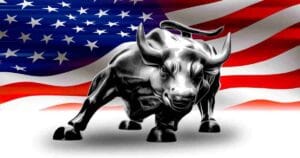Introduction to the DoubleVerify Class Action Lawsuit
The most important DoubleVerify class action lawsuit continues to unfold as investors face the company’s dramatic stock collapse. The stock took a massive hit and plummeted by 36%, with share prices dropping $7.83 from $21.73 to $13.90 on February 28, 2025, after disappointing financial news. This sharp decline came after earlier market troubles that saw shares fall 21.3% on February 29, 2024, followed by another 38.6% drop on May 8, 2024, decimating shareholder portfolios. .

The DoubleVerify class action lawsuit targets DoubleVerify’s CEO Mark Zagorski and CFO Nicola Allais directly. They allegedly overbilled customers systematically for ad impressions served to declared bots. The DoubleVerify lawsuit represents investors who bought common stock between November 10, 2023, and February 27, 2025 when the stock was artificially inflated. Ultimated, when the truth emerged, shaerholders unfortuantly suffered portfolio decimation. U.S. Senator Mark Warner has reached out to both the Federal Trade Commission and Department of Justice about the systematic customer overcharging. Investors who want to join this case should remember the July 21, 2025 deadline to request appointment as lead plaintiff.
DoubleVerify stock crashes after disappointing earnings
DoubleVerify’s financial performance led to several devastating stock plunges in the last year. These drops created the backdrop for the current investor lawsuit. The company started facing troubles in February 2024 when the stock dropped 21.3%. Lower-than-expected revenue growth projections for Q1 2024 caused this drop, as the company cited “a slow start by brand advertisers”.
Things got worse on May 7, 2024. DoubleVerify reduced its full-year revenue guidance from $688-704 million to $663-675 million. The shares crashed by 38.6% and closed at $18.78 the next day. Company leaders revealed a dashboard error that showed X’s brand safety rates as 70% for almost five months. The actual score was 99.99%, which might have kept advertisers away from the platform.

The company faced another collapse on February 27, 2025, after reporting disappointing Q4 2024 results. Revenue reached only $191 million, showing just 9% growth. This fell below management’s guidance of $194 million. The stock dropped another 36% to $13.90.
The company’s net income shrank by 42% to $7.10 million. After foreign currency adjustments, it fell to just $2.50 million. This showed a troubling pattern of slowing growth – from 36% in 2021 and 2022, to 27% in 2023, 15% in 2024, and an expected 10% for 2025.
The management blamed reduced spending from major customers for these poor results. Six big clients reduced their spending in 2024. One major customer cut back spending so much that DoubleVerify left them out of 2025 guidance. During the earnings call, leaders also mentioned that advertising dollars moving from open exchanges to closed platforms hurt the company.
The market reacted strongly to these developments. DoubleVerify’s market value dropped by $2.10 billion, from $5.30 billion to $3.20 billion. The stock now trades 62% below its June 2021 peak and well under its April 2021 IPO price of $27.00. In other words, when the truth finally emerges, shareholders unfortunately suffer portfolio decimation.
Adalytics report accuses DoubleVerify of ad fraud
DoubleVerify faced a severe crisis on March 28, 2025. Research firm Adalytics released a damaging 240-page report that accused the company of systematic ad fraud. The Wall Street Journal covered this report, which claimed DoubleVerify failed to detect and filter nonhuman bot traffic consistently. The company charged advertisers premium fees for these specific services.

Adalytics’ investigation revealed a troubling pattern. Thousands of major brands’ ads appeared before bots, even though companies paid extra to prevent this exact problem. The report identified tens of millions of cases spanning seven years. Major brands like Hershey’s, Tyson Foods, T-Mobile, and others saw their ads served to bots across websites by the thousands.
The report highlighted another serious issue. “Advertisers were billed by ad tech vendors for ad impressions served to declared bots”. DoubleVerify’s software recognized these bots in some instances but still allowed brands to purchase ads targeting these nonhuman audiences.
DoubleVerify pushed back immediately. The company labeled Adalytics’ report “inaccurate and misleading”. They argued that the report’s basic contours were flawed. The company stated that General Invalid Traffic (GIVT) gets removed post-bid from billable counts, which aligns with industry standards. DoubleVerify pointed out that URLScan traffic, which they maintain isn’t a self-declaring bot, accounted for over 90% of the report’s examples.
The situation escalated in May 2025. DoubleVerify filed a defamation lawsuit against Adalytics. Court documents showed DoubleVerify’s claim that Adalytics “knowingly made false public statements to drive customers away from DoubleVerify” and “acted with actual malice”. DoubleVerify alleged that Adalytics manipulated their findings and cherry-picked results that supported their claims while ignoring contradictory evidence.
The impact proved significant. The Adalytics report became crucial evidence in DoubleVerify’s class action lawsuit. Investors cited it to prove the company misrepresented its technology capabilities and systematically overcharged advertisers.
Investors file DoubleVerify class action lawsuit over alleged deception
The stock collapse and damaging Adalytics report triggered multiple law firms to launch class action lawsuits against DoubleVerify Holdings, Inc. (NYSE: DV) in May 2025. The Electrical Workers Pension Fund, Local 103, I.B.E.W. filed a federal class action lawsuit (Case 1:25-cv-04332) in the Southern District of New York on May 22, 2025. This legal action targets the corporation and its executives Mark Zagorski and Nicola Allais.

Investors who purchased DoubleVerify common stock between November 10, 2023, and February 27, 2025, can join the DoubleVerify class action lawsuit. These shareholders have until July 21, 2025 to file as lead plaintiff. Several prominent law firms have taken up these cases, including the Law Offices of Timothy L. Miles.
The DoubleVerify class action lawsuit highlights six specific misrepresentations by DoubleVerify:
- The company did not disclose that customers were changing ad spending to closed platforms like Meta and Amazon, where DoubleVerify’s capabilities were limited[152]
- They misrepresented the costs and timeline to develop technology for closed platforms
- They concealed that Activation Services’ monetization would take several years
- They hid that competitors had better positioning to incorporate AI on closed platforms
- They systematically overbilled customers for ad impressions served to declared bots
- They issued misleading risk disclosures that characterized existing problems as mere possibilities
U.S. Senator Mark Warner’s actions gave these allegations more credibility. He contacted both the Federal Trade Commission and Department of Justice on March 29, 2025, and expressed concerns about “continued prevalence of fraud in the digital advertising industry”. Warner asked whether verification vendors like DoubleVerify had “knowingly misrepresented their capabilities” and potentially violated the False Claims Act.
The DoubleVerify lawsuit now extends beyond investor concerns and includes potential regulatory investigations. This creates unprecedented pressure on DoubleVerify’s business model and market value.
Conclusion: What This Means for DoubleVerify’s Future
DoubleVerify faces new challenges as legal and regulatory pressures build up. The company’s stock has plunged dramatically. It lost over 62% of its value since its peak and erased $2.10 billion in market value. Shareholders have endured heavy losses while class action lawsuits gain traction.

Legal action against the Adalytics report hasn’t helped DoubleVerify much, as the damage runs deep. Senator Warner’s involvement has raised this case from investor concerns to potential regulatory issues. Federal agencies might launch formal investigations soon, creating more uncertainty about the company’s future.

The lead plaintiff applications deadline of July 21, 2025 approaches fast. Affected investors must choose between joining the class action or filing individual claims. DoubleVerify must tackle both its immediate legal challenges and the business problems that caused its sharp revenue slowdown.
This case expresses broader concerns about transparency and accountability in the digital advertising industry. The allegations against DoubleVerify would reshape verification services and how advertisers review their effectiveness if proven true.
The company’s growth has reversed sharply – from 36% growth in 2021-2022 to an expected 10% for 2025. This decline and serious allegations of fraudulent practices raise questions about DoubleVerify’s business model’s long-term survival.
This situation teaches investors a valuable lesson. Industry leaders can see their valuations collapse quickly when their core business practices face scrutiny. DoubleVerify denies any wrongdoing, but the market has spoken through the stock’s dramatic fall.

Frequently Asked Questions About the DoubleVerify lawsuit
Q1. What triggered the DoubleVerify class action lawsuit ? The DoubleVerify lawsuit was triggered by a significant stock plunge following disappointing earnings reports and allegations of ad fraud. DoubleVerify’s stock fell 36% on February 28, 2025, after a series of financial setbacks and accusations of systematically overbilling customers for ad impressions served to bots.
Q2. What are the main allegations in the DoubleVerify lawsuit? The DoubleVerify lawsuit alleges that DoubleVerify misrepresented its technology capabilities, failed to disclose shifts in customer ad spending, concealed limitations in monetizing certain services, and systematically overbilled customers for ad impressions served to declared bots.
Q3. How has DoubleVerify’s financial performance been affected? DoubleVerify’s financial performance has deteriorated significantly. The company’s revenue growth has slowed from 36% in 2021-2022 to a projected 10% for 2025. Its market capitalization has also plunged by $2.10 billion, from $5.30 billion to $3.20 billion.
Q4. What role did the Adalytics report play in the DoubleVerify controversy? The Adalytics report, published on March 28, 2025, accused DoubleVerify of systematic ad fraud. It claimed that ads from major brands were being shown to bots despite companies paying for services to prevent this. The report became a central element in the class action lawsuit against DoubleVerify.
Q5. What is the deadline for investors to join the DoubleVerify class action lawsuit? Investors who purchased DoubleVerify common stock between November 10, 2023, and February 27, 2025, have until July 21, 2025, to request appointment as lead plaintiff in the class action lawsuit.
Contact Timothy L. Miles Today About a Doubleverify Class Action Lawsuit
If you suffered losses in Doubleverify stock, call us today for a free case evaluation about a DoubleVerify class action lawsuit. 855-846-6529 or [email protected] (24/7/365).
Timothy L. Miles, Esq.
Law Offices of Timothy L. Miles
Tapestry at Brentwood Town Center
300 Centerview Dr. #247
Mailbox #1091
Brentwood,TN 37027
Phone: (855) Tim-MLaw (855-846-6529)
Email: [email protected]
Website: www.classactionlawyertn.com



